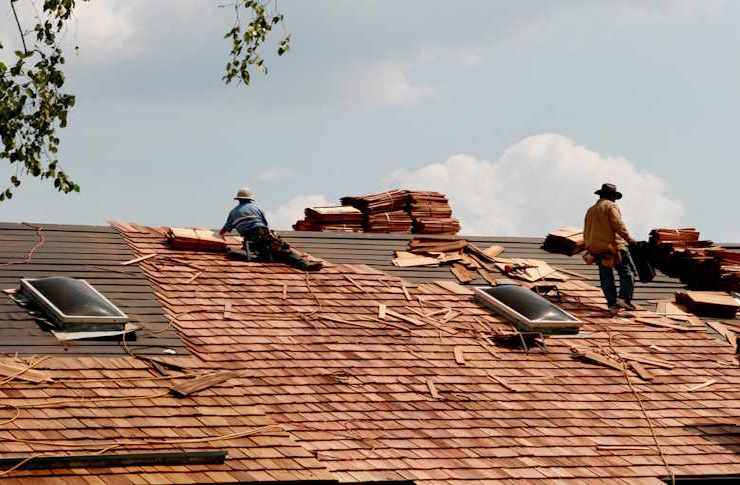Explore How Roof Leaks Can Impact Your Home and Property Value
Even a small roof leak may lead to structural issues or costly repairs over time. Regular inspections and timely maintenance can help preserve your home condition, safety, and overall value, while reducing unexpected expenses and protecting your investment long term.

How can a tiny leak impact your property value?
A seemingly insignificant roof leak can have far-reaching consequences for your property value. Water infiltration, even in small amounts, can cause extensive damage over time. As moisture seeps into your home’s structure, it can lead to wood rot, weakening the roof’s support system and compromising the overall structural integrity of your house. This deterioration not only poses safety risks but also significantly reduces your property’s market value.
Moreover, persistent leaks can result in unsightly water stains on ceilings and walls, which are immediate red flags for potential buyers. The presence of water damage may suggest ongoing maintenance issues, deterring prospective purchasers and potentially lowering offers on your property. Additionally, if left unchecked, small leaks can escalate into larger problems, necessitating costly repairs that further diminish your home’s value.
What kinds of leaks can impact your property value?
Various types of roof leaks can affect your property value, each with its own set of consequences. Flashing leaks, which occur around chimneys, vents, or skylights, can allow water to penetrate the roof’s surface and damage the underlying structure. Shingle damage, whether from age, weather, or improper installation, can create entry points for water, leading to extensive interior damage over time.
Ice dam leaks, common in colder climates, form when melting snow refreezes at the roof’s edge, forcing water underneath shingles and into your home. These leaks can cause significant damage to walls, ceilings, and insulation. Valley leaks, occurring where two roof planes meet, can be particularly problematic as they tend to channel large volumes of water into the home, potentially causing rapid and severe damage.
Each of these leak types can significantly impact your property value by necessitating expensive repairs, creating long-term structural issues, and potentially leading to mold growth – a major concern for both current homeowners and prospective buyers.
What signs may indicate a hidden leak in your roof?
Identifying hidden roof leaks early is crucial for minimizing damage and protecting your property value. Several signs may indicate the presence of a concealed leak:
-
Water stains on ceilings or walls, often appearing as discolored patches or rings
-
Peeling paint or wallpaper, particularly on upper floors or in attic spaces
-
Musty odors in certain rooms, which may indicate mold growth from hidden moisture
-
Unexplained increases in energy bills, potentially due to wet insulation losing its effectiveness
-
Visible mold growth on interior surfaces, especially in corners or along ceiling edges
-
Sagging or bubbling in ceiling materials, suggesting water accumulation above
-
Granules from asphalt shingles collecting in gutters, indicating roof deterioration
Regular inspections of your attic and upper floors can help you spot these warning signs early, allowing for prompt repairs and minimizing the impact on your property value.
How to get a trusted local roof repair service?
Finding a reputable roof repair service is essential for addressing leaks effectively and protecting your property value. To locate a trusted local provider:
-
Ask for recommendations from friends, family, or neighbors who have recently had roof work done
-
Check online review platforms and the Better Business Bureau for highly-rated local contractors
-
Verify that potential service providers are licensed, insured, and experienced in handling your specific type of roof
-
Request and compare multiple quotes from different contractors to ensure fair pricing
-
Ask for references and examples of past work to gauge the quality of their services
-
Inquire about warranties or guarantees offered on both materials and workmanship
-
Ensure the contractor is willing to provide a detailed written contract outlining the scope of work, timeline, and costs
By taking these steps, you can increase the likelihood of finding a reliable roof repair service that will help maintain your home’s condition and value.
How much does roof repair typically cost?
The cost of roof repair can vary widely depending on the extent of the damage, the type of roofing material, and your location. Here’s a general overview of potential costs for common roof repair services:
| Repair Type | Average Cost Range | Factors Affecting Cost |
|---|---|---|
| Minor repairs (e.g., replacing a few shingles) | $150 - $500 | Accessibility, material type |
| Moderate repairs (e.g., fixing flashing) | $400 - $1,000 | Extent of damage, location on roof |
| Major repairs (e.g., structural issues) | $1,000 - $3,000+ | Severity of damage, need for additional materials |
| Full roof replacement | $5,000 - $15,000+ | Roof size, material choice, complexity of installation |
Prices, rates, or cost estimates mentioned in this article are based on the latest available information but may change over time. Independent research is advised before making financial decisions.
Regular maintenance and prompt attention to minor issues can help prevent more costly repairs down the line, ultimately preserving your property value. It’s important to address roof leaks as soon as they’re detected to minimize damage and keep repair costs manageable.
In conclusion, roof leaks, regardless of their size, can have a significant impact on your home and property value. From compromising structural integrity to creating ideal conditions for mold growth, these issues can lead to extensive damage if left unchecked. By staying vigilant for signs of hidden leaks, addressing problems promptly, and working with trusted local repair services, you can protect your investment and maintain the value of your property for years to come.




